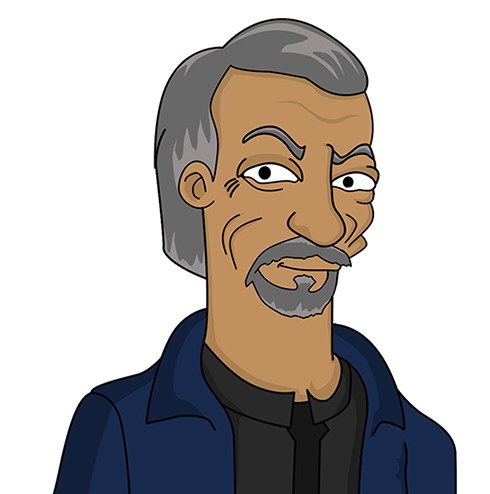
The History of Colin Isaacs
Colin is listed in the Dictionary Of Australian Artists on-line.
|
The History of Colin Isaacs Colin is listed in the Dictionary Of Australian Artists on-line. |
| Born 1953 Matrabar - traditional Aboriginal name for the Sydney Suburb of Paddington. Colin, a member of the Dharawal people on his mothers side, were people identified as living around Botany Bay, the site of the first landing and Port Jackson - Sydney Harbour, the site of the first settlement. Dharawal / Tharawal/ Turrawal were also identified as the coast people living along the Parramatta River to Parramatta and in the Broken Bay area - Palm Beach to Berowra Waters, were all mobs that had similar traditions. Neighbouring mobs that were further inland and were referred to as the "woods" or 'inland" mobs, or clans, and had different traditions. Eora people, from the Port Jackson region (known as Cadigal) spoke a different language from the Dharawal, whose territory extends from Kurnell Peninsula to Nowra in the south and west to Camden. The Aborigines of Kurnell were the Gweagal people, Dharawal is like a state; Gweagal is like a shire within the state; Cunnel (Kurnell) is a family village within the shire. There was no written language and it was the dialect that distinguished the separate mobs. Colin is also a member of the Noongar people on his fathers side. The Noongar (Wudjari, Njunga, Nyungar, Nyoongar) of the south western corner of Western Australia, from Geraldton on the west coast, to Esperance on the south coast. Their tribal lands extend from Jurien Bay in the north, to the southern coast and east to Ravensthorpe and Southern Cross. Nyungar is also the common language. In the south the spelling Noongar is preferred, reflecting a broader accent. Colin moved to Inverell from Sydney's La Perouse in the early 1980's where he has evolved into one of the finest Aboriginal Artists Australia has ever produced. A description used by Mr Wesley Noffs National Director of the Life Education Centres. Mr Noffs presented this comment after Colin had produced a mural measuring 28 metres long by 3 metres wide. Colin is now a member of the extended family of the Ngarabal (Ngarabul, Ngarrabul, Narbul, Marbul) people of the Inverell and Glen Innes area, after moving to Inverell in the early 1980's. In 1999, Colin became involved
with the Myall Creek Memorial Committee and began creating art to
be used at the Memorial site at Myall Creek. The Myall Creek Memorial was erected in June 2000 by a group of Aboriginal
and non-aboriginal people working together in an act of reconciliation. It was
awarded the Judith Wright Prize for innovative reconciliation work in 2005. In
June 2008 Peter Garrett announced Myall Creek Memorial as part of the national
heritage register. In November 2010 Minister for Aboriginal Affairs Paul Lynch
announced Myall Creek Memorial as part of the NSW State Heritage
Register. Colin has a website page devoted to the Myal Creek Massacre of 1838. As Colin's art is used at the memorial site, Colin has become known as the Myall Creek Artist, although he was not born at Myall Creek In 2005, Colin, Chairman of Armajun Aboriginal Health Service was instrumental in the development of the Armajun Medical Health Centre at Inverell. In May 2005, the building on the corner of Otho and Rivers Streets Inverell was abandoned. In January 2006, eight months later, the Medical Centre opened its doors to the public, as a first class Aboriginal Health Centre, serving the community of Inverell and surrounds. Armajun Aboriginal Health Centre caters for the health of Aboriginal and non Aboriginal people. Colin's website went on-line in late June 2005. On hand to officially open the Medical centre in February 2006, Senator Nash said she was impressed with the speed with which the centre was established. “From what I understand the centre was up and running in record time. To get a facility like this established is no mean feat, but to do it in less than 12 months is nothing short of impressive,” Senator Nash said. Commenting on how quickly the centre has been established, Colin said he would like to have worked faster! “We were all just so thrilled to have been granted the funding from the Federal Government and couldn' t wait to get the wheels in motion and get things moving,” Colin said. More than 1,500 will be benefit from the services the centre offers, including an in-house GP, a registered nurse, Aboriginal health worker, transport officer and receptionist. “The centre which exists today is a tribute to those involved and is a shining example of the community spirit rural and regional Australia thrives on,” Senator Nash said.
|
| Woodburnings, Carvings and Pyrography Colin Isaacs © Copyright
2005 |